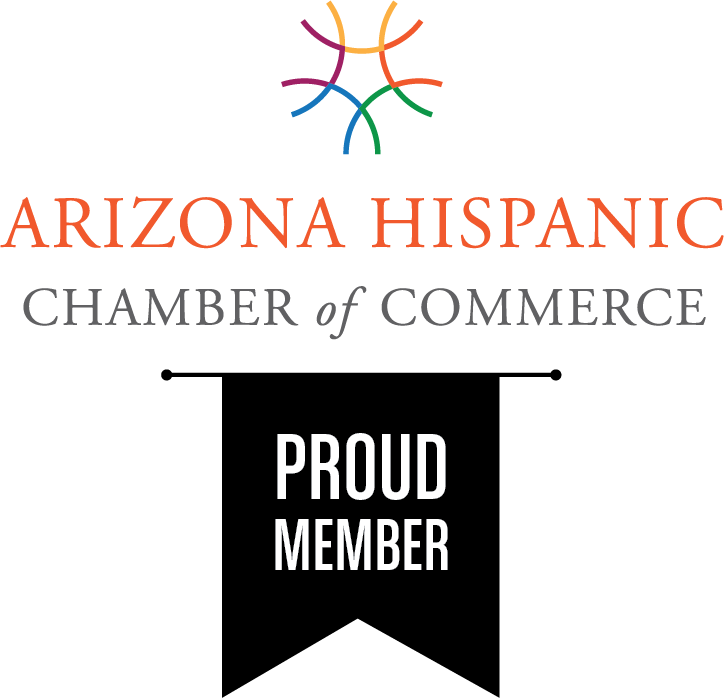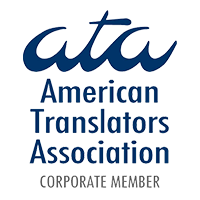Prepare IEP reports before translation for productivity gains

It’s 10 o’clock on a typical Wednesday morning and Carol, a talented English-to-Spanish school district translator, receives a translation request for eight Individualized Education Program (IEP) reports.
Her district uses Frontline Education to handle special education work; all reports are available in PDF format.
Carol knows what’s coming and sighs: “Another long morning of tedious file preparation.”
What’s IEP file preparation?
In the context of translation, file preparation is the task of making sure non-editable formats, such as PDF, can be turned into editable formats, such as Word—ensuring they can be easily readable by translation software (also known as CAT tools).
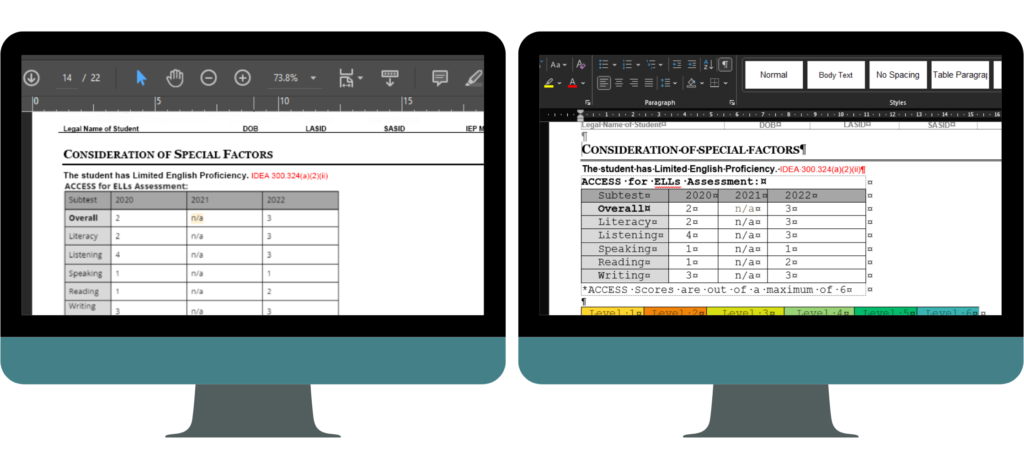
The table wasn’t editable in the PDF version, but we quickly made it editable while preserving its structure.
What to know about complex docs and CAT tools
Translation software helps school district translators work faster, more consistently, and more accurately.
We’ve seen that school districts most commonly purchase translation software to meet the multilingual translation needs of their Special Education departments.
Such documents can be lengthy, include repetitive sections, require accurate terminology—and they must be turned around quickly.
Translation software capabilities can streamline all this. However, they can’t optimally decode PDF files—the standard format of IEP docs and the go-to for Special Education departments.
In our scenario, Carol must quickly convert these PDF reports into a format that can leverage her district’s translation software.
What options does she have?
A short-term solution for file preparation
As we explained in our post on managing translation departments in educational settings, district translators can leverage official IEP bilingual templates to speed up the file-prepping process.
These are offered by state departments of education in Word format, and they’re usually organized by section (e.g., safeguard procedurals, eligibility criteria, etc.).
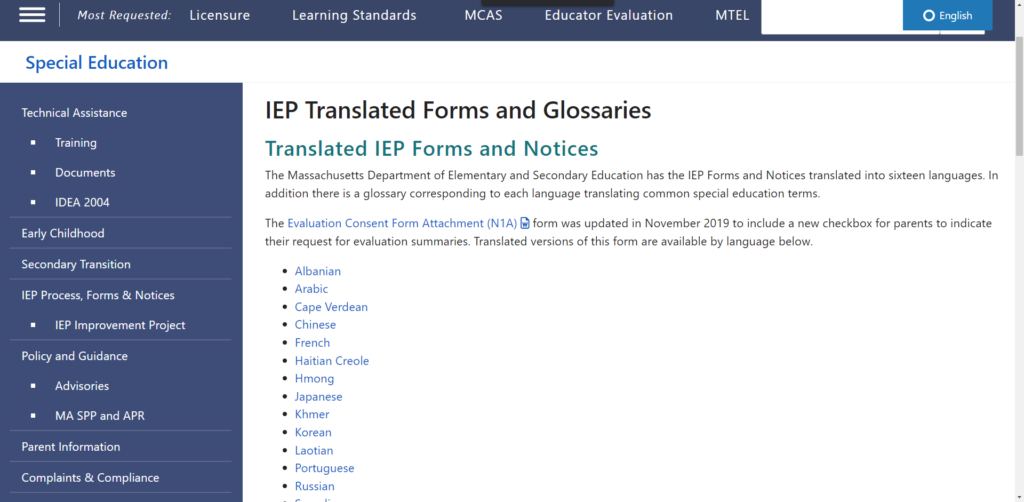
Thus, a district translation manager can create a master template including the different languages and edit it to include any district-specific information, such as logos, school colors, and addresses.
Once a new IEP translation request comes, the translators simply need to create a copy of this master template, then copy and paste the student’s data, observations, and results to start translating.
Although templates can facilitate the process, they still require administrative repetition; we don’t consider them adequate as a permanent solution.
File preparation is not translation
We learned a lot from one-on-one interviews we conducted with district translators and translation managers. Did you know they estimate spending five to six hours per week just on file preparation tasks?
That’s 20 hours per month or 240 hours per year. More importantly, that represents time school district translators aren’t devoting to what they do best!
In fact, file prep and formatting require a set of technical skills that don’t naturally align with translation work.
Add to that the pressure of delivering a high-quality translation within a short turnaround time, and you can see why Carol and other district translators may not only feel frustrated and burned out, but potentially unable to deliver their best work or even meet deadlines.
Delegation is key
We think school district translators and translation managers should devote themselves to acting as liaisons between their multilingual communities and their district’s schools without the extra administrative or design workload.
Imagine freeing up all that file prep and formatting time so your language experts can dive right into translation or interpretation.
Delegate the file prep tasks and focus on what matters most: Communicating with your multilingual students and their parents.
Our advanced OCR technology understands the complex layouts of your IEP documents to put you at ease while our designers skillfully implement the final touches.
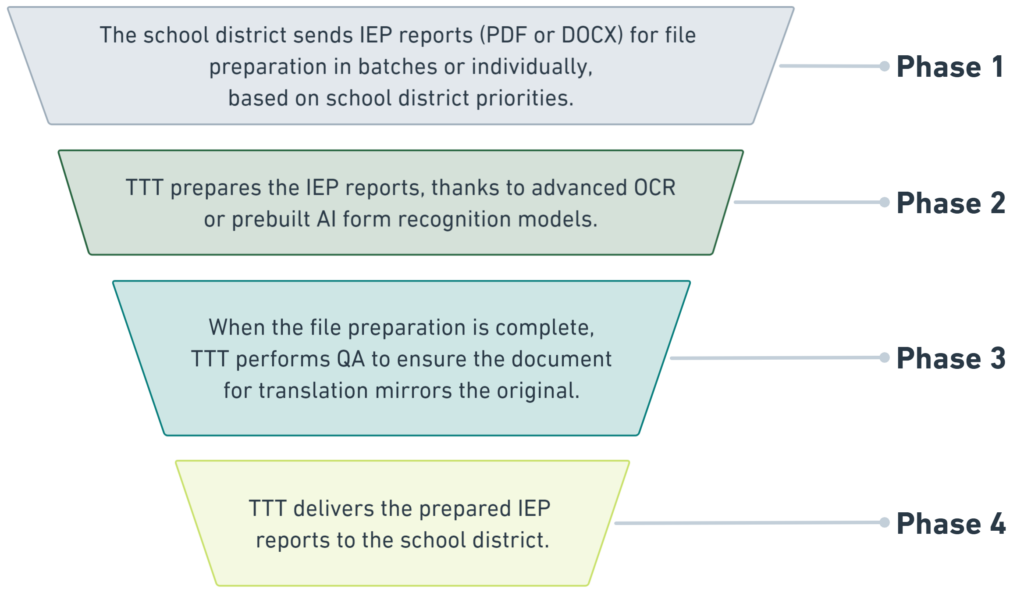
While PDF is the most requested file type, we’re proficient with InDesign, Illustrator, Photoshop, Canva, Google Slides, Google Docs, Publisher, and PowerPoint.
We’ve got your back, recognizing that each school district has specific and unique needs.
You might have established your own translation process, but does it maximize your staff’s skill set?
Send us a note with any questions or challenges using the form below.






